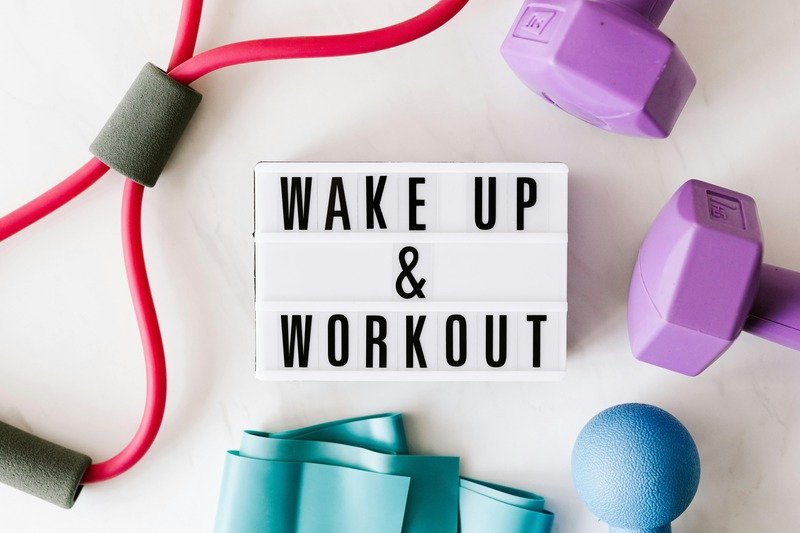We independently test and review fitness products using a research-based approach. If you buy through our links, we may earn a small commission at no extra cost to you. Read our Disclosure
When it comes to fitness, mixing active and passive exercise is key. Active recovery means doing light workouts. Passive recovery is all about rest and relaxation. Together, they help you get the best results, prevent injuries, and keep making progress.

Using both active and passive recovery helps you stay fit and healthy. Active recovery helps with blood flow, fixing muscles, and refreshing your mind. Passive recovery lets your body heal and get ready for more training.
If you love working out or are just starting, knowing how active and passive exercise work together is important. Finding the right mix of these can help you reach your fitness goals. It makes your fitness journey rewarding and keeps you healthy and strong.
The Dynamic Duo: Active and Passive Recovery
Recovery is key in fitness, yet many overlook it. It’s crucial for top performance and long-term success. Active recovery and passive recovery work together for a balanced fitness plan. Let’s explore how these two methods help us recover.
Decoding the Terminology
Active recovery means doing light exercises like walking, yoga, or easy cycling. It keeps the body moving and helps with blood flow. This helps remove waste and bring nutrients to muscles, aiding recovery.
Passive recovery is all about rest and relaxation. It includes getting enough sleep, eating right, and using techniques like meditation or cold/hot therapy. These help the body repair and get ready for more exercise.
The Yin and Yang of Fitness
Active and passive recovery work together, like yin and yang. Active recovery keeps muscles moving and flexible. Passive recovery lets the body rest and heal. Using both methods helps support natural healing and improve fitness and performance.
Finding the right balance between active and passive recovery is important. It depends on your fitness goals and workout intensity. A mix of both can lead to better muscle recovery, fewer injuries, and a lasting fitness journey.

Active Recovery: Gentle Movement for Optimal Rejuvenation
Finding the right balance between hard training and recovery is key for top fitness and performance. Active recovery is a gentle, low-impact way that’s great for your body and mind. It helps your muscles and mind get back to top shape, ready for your next big workout.
Low-Intensity Workouts
Active recovery doesn’t mean you have to go all out. It’s about doing low-intensity workouts that help with circulation and flexibility without overworking your muscles. Think of it as a casual walk, some light yoga, or a gentle bike ride. These activities help clear out waste, improve blood flow, and help your muscles repair and rejuvenate.
Mental Recharge
But active recovery is also good for your mind. The easy exercises let your mind relax and unwind, reducing stress and fatigue from hard workouts. This mental break is key to keeping your focus, motivation, and overall well-being on your fitness path.
Adding active recovery to your routine helps balance challenging your body with letting it recover. This approach lets you push your limits without burning out. It makes sure your fitness recovery and exercise recovery are just as important.

Passive Recovery: The Art of Complete Rest
Passive recovery is just as important as active recovery for fitness and long-term performance. It helps the body heal and restore naturally. This includes sleep, nutrition, and relaxation techniques.
The Magic of Sleep
Good sleep is key for fixing tissues, managing hormones, and boosting the immune system. Not enough sleep can lead to injuries and slow down recovery. Sleeping 7-9 hours a night helps your body heal naturally.
Nutritional Support
Good nutrition is vital for recovery. Eating about 1 gram of protein per pound of body weight helps muscles repair. Also, eat foods high in antioxidants and drink plenty of water to aid recovery.
Relaxation Techniques
Relaxation techniques like meditation and deep breathing help lower stress and improve blood flow. These practices support healing. Adding them to your routine boosts passive recovery.
Focus on passive recovery to help your body repair and rejuvenate. This prepares you for your fitness journey ahead.
Active vs. Passive Exercise: The Perfect Pairing for a Balanced Fitness
Active and passive exercise work together to make a complete fitness plan. They help you stay fit and healthy. It’s important to listen to your body and mix both types of exercises based on what you need and your fitness level.
Active recovery exercises like jogging, swimming, or cycling help with muscle recovery and improve blood flow. This helps clear out lactic acid and reduces muscle fatigue. Studies show that active recovery at a lower intensity helps you bounce back faster than stopping completely.
Active stretching also boosts flexibility better than just static stretches. It works out opposing muscles and helps with moving your joints more easily.
Passive recovery, like restorative yoga or meditation, lets your body fully rest and heal. Passive stretching is great for muscle growth, keeping flexibility, and preventing injuries. It’s especially helpful if you’re recovering from an injury or have limited movement.
Adding both active and passive exercises to your routine boosts recovery and long-term fitness success. Active recovery keeps your heart and muscles in good shape. Passive recovery lets your body rest, repair, and adjust to exercise demands. This balance between active and passive exercise is key to a lasting fitness journey.
Listening to Your Body’s Signals
Finding the right mix of active and passive recovery is key in fitness. It’s all about paying attention to what your body tells you. These signals help you choose the best recovery methods.
If you’re tired or sore, it might be time for passive recovery. This means getting enough sleep, relaxing, or eating right to help your body heal. On the other hand, if you’re full of energy and want to move, an active recovery like a light jog or yoga could be good for you.
As you keep working out, your body’s recovery needs will change. It’s important to be open to trying new things and listening to your body. This way, you can make sure you’re getting the most out of your workouts and keep making progress.
- Tune in to your body’s subtle cues to determine the right balance between active and passive recovery.
- Prioritize passive recovery when your body feels fatigued or experiences persistent soreness.
- Opt for active recovery when you have an abundance of energy and a desire to move.
- Adapt your recovery strategies as your fitness journey evolves to meet your body’s changing needs.
By listening to your body and using the right recovery methods, you can make the most of your fitness efforts. Keep paying attention to what your body needs. Let it lead you to the perfect mix of active and passive recovery.
The Evolution of Recovery Needs
As people get better at fitness recovery and exercise recovery, their recovery adaptation needs change. What worked at the start might not work as well as the body gets stronger. It’s important to switch between active vs passive recovery to keep making progress and avoid getting hurt.
Checking and changing the recovery plan often is key to doing well over time. A study in 1989 showed that being fit was linked to living longer for both men and women. This highlights how important a good recovery plan is.
| Recovery Phase | Initial Recovery Needs | Advanced Recovery Needs |
|---|---|---|
| Early Stages | Focus on passive recovery Prioritize rest and sleep Implement basic nutrition strategies | Incorporate more active recovery Optimize sleep and nutrition Explore recovery techniques like massage, compression, and sauna |
| Intermediate/Advanced | Balance active and passive recovery Personalize recovery strategies Monitor progress and adjust accordingly | Emphasis on active recovery and high-intensity interval training Implement advanced recovery modalities Continuous optimization of recovery-adaptation balance |
It’s important to regularly check and tweak the recovery strategy for long-term success. By listening to the body’s changing recovery needs, people can improve their fitness progress and reach their goals faster.
Consistency: The Key to Long-Term Success
Long-term fitness success comes from being consistent. Mixing active and passive recovery in a routine keeps you motivated, avoids injuries, and helps you reach your fitness goals.
Integrating Active and Passive Techniques
Using both light activity and rest is key for a good fitness recovery plan. Active exercise recovery, like easy workouts, helps your body adjust and recharge. Passive recovery methods, like sleep, eating right, and mindfulness, help you fully recover.
- Switch between active and passive recovery activities all week for a balanced consistent fitness routine.
- Pay attention to your body and change your recovery strategy if needed to avoid burnout and improve performance.
- Understand the benefits of active vs. passive recovery for long-term fitness success.
Combining these techniques keeps you motivated, avoids injuries, and helps you keep moving towards your fitness goals. Being consistent is the secret to making the most of your exercise recovery journey.
Kinevia Duo: The Intelligent Exercise Therapy System
Meet the Kinevia Duo, a cutting-edge exercise therapy system for various recovery needs. It has different exercise modes like passive, assisted, and active. This lets users customize their rehab to fit their needs.
Versatile Exercise Modes
The Kinevia Duo suits all recovery stages. It has passive modes for easy, low-impact exercises that help with blood flow and joint movement. There are also assisted modes to help users build strength and mobility.
For a full fitness plan, the active modes offer more intense workouts.
Innovative and Intuitive Design
The Kinevia Duo is easy to use and has a smart design. It has tool-free adjustments and is built to be safe and comfy. It also has interactive games and videos to keep users engaged and track their progress.
Looking for a gentle rehab or intense workouts? The Kinevia Duo is ideal for your fitness goals.
The Benefits of Movement Therapy
Moving often, whether you do it yourself or use a device like the Kinevia Duo, is great for getting better and feeling good. It keeps muscles strong, helps with muscle tone, stops joints from getting stiff, boosts metabolism, and gets blood flowing better.
Using both active and passive recovery methods brings many benefits for your body and mind. Active movement, like easy workouts and exercises, refreshes your mind and helps you recover. Passive recovery, like sleeping, eating right, and relaxing, lets your body rest and heal.
Combining active and passive recovery methods greatly helps your health and fitness. If you’re an athlete wanting to do better or just someone wanting to stay healthy, using movement therapy can really change things. It helps you reach your goals and feel better overall.


